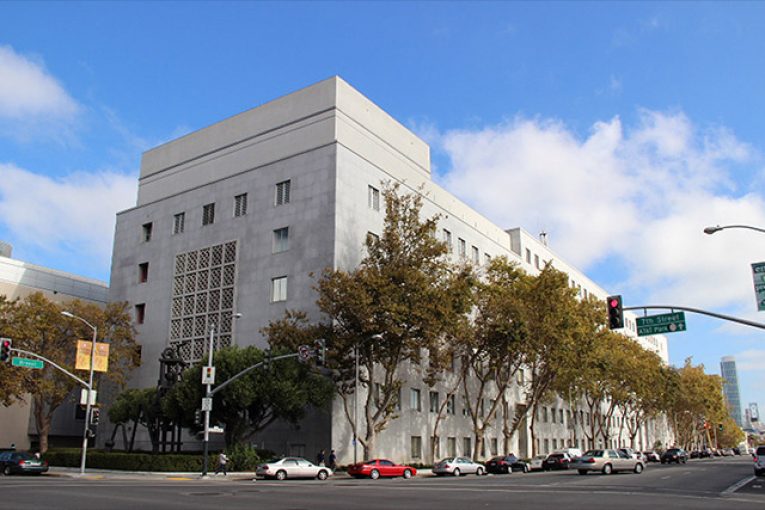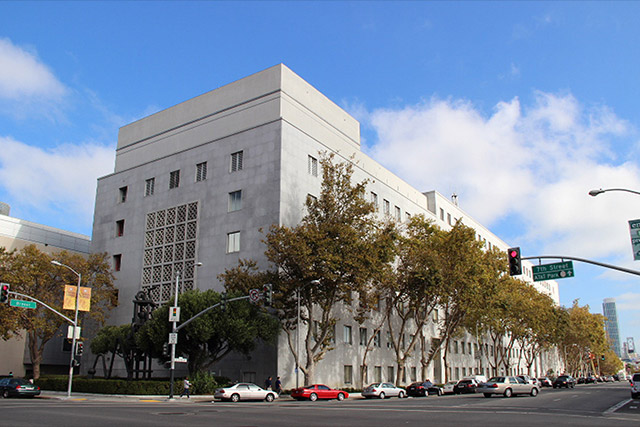

By Ransom Bergen
San Francisco – In a preliminary hearing on Thursday, the court focused on how to assess intention to commit murder.
The defendant, Rommell Boyland, faces charges of first degree attempted murder after discharging a silver revolver, which subsequently resulted in serious injury to the complaining witness’s hand. According to the complaining witness, he and Boyland were three to four feet from one another at the time the revolver was fired. The complaining witness also claimed to an officer that Boyland fired the revolver three to four times in total. At the moment he made this statement, the complaining witness was strapped to a gurney and “writhing in pain” in a moving ambulance.
Before the incident, Boyland had been inside a residence where the lease was signed by the mother of his ex-girlfriend. His ex-girlfriend and the complaining witness, who are currently dating, were also present in the residence. The three were together in this residence for an unspecified amount of time. Apparently, the situation was tense.
At the insistence of the lease owner, the complaining witness eventually escorted Boyland from the premises. Boyland did not want to leave. Boyland’s ex-girlfriend (the complaining witness’s current girlfriend) stated to an officer some time later–a different officer than the one testifying–that the complaining witness threw a punch at Boyland before the two vacated the building.
According to an officer that testified, the complaining witness stated that, upon escorting Boyland from the residence, the complaining witness took a dig at Boyland, asking, “What are you going to do about it?” (“it” meaning being escorted from the residence).
Boyland allegedly responded, “Nothing,” and began walking away. The complaining witness said that he then called Boyland a b***h. Apparently as a response to this insult, Boyland spun around and fired the revolver, which had been in the pocket of his jacket.
Boyland’s attorney, Deputy Public Defender Semuteh Freeman, sought to bring this charge down from attempted murder to a charge of assault with deadly weapon. In the defense’s view, the court does not have enough evidence to suggest Boyland had the intention to kill the complaining witness. That intention, or malice, is a necessary component of the attempted murder charge.
There are several parts to Ms. Freeman’s argument. First, if Boyland had actually wanted to kill the complaining witness, he could have done so at any moment the two were inside the residence, if  the revolver had been inside Boyland’s pocket the entire time.
the revolver had been inside Boyland’s pocket the entire time.
Second, Ms. Freeman made a point of relaying the context for the incident while paying specific attention to the ways in which the complaining witness may have incited a negative response from Boyland: the alleged punch and the insult, and Boyland was in the process of leaving before he fired the revolver. Moreover, he had declared to the complaining witness that he had no intention of doing anything in retaliation to being escorted out. The thing that seemed to motivate him to turn around was his reaction to being called a “b***h,” and Ms. Freeman suggested he had very little forethought before firing.
Third, Ms. Freeman argued that, since Boyland was at point blank range from the complaining witness, the fact that only the complaining witness’s hand was hit suggests Boyland had not intended to cause him mortal, or even serious, harm. It is somewhat unlikely that at a distance of three to four feet (even less with the extension of his arm) Boyland could miss his intended target. Assistant District Attorney Chow proposed that Boyland’s hand could have been shaking, and that the complaining witness had moved away from the spot Boyland was aiming at. An officer testified, however, that he never asked the complaining witness how quickly and close together the shots were fired, which means the court had no indication as to how much time Boyland had spent aiming for the first shot or re-aiming between shots.
Fourth, Ms. Freeman attempted to show that the complaining witness’s statement to that officer on the stand was less than reliable. The complaining witness was in extreme pain and very agitated while answering the officer’s questions. Additionally, the complaining witness said that Boyland had fired the revolver three to four times. Only two bullet holes were found in the siding of the residence. The Assistant District Attorney submitted a picture of these holes into evidence.
A different officer was then brought in to testify. This officer was the first to appear at the scene. Ms. Freeman asked this officer if he had inspected the holes personally before being shown a picture of them in court. The officer said he had indeed seen the holes before.
Next, Ms. Freeman asked how he knew they were bullet holes. The officer replied that he had assumed that they were bullet holes because he had been called to respond to a potential shooting. The Deputy Public Defender asked the officer what distinguishes a bullet hole from some other kind of hole, such as one made by a drill. The officer said drill holes have fringe, typically, when bored into a material like wood. Ms. Freeman asked if the officer knew if the siding of the residence where the holes were found would have the same fringe around the edges as wood would have, if drilled. The officer confessed he was unsure. When the Deputy Public Defender asked the officer again what made him confident the holes were bullet holes, he responded, “Honestly, I didn’t examine it that closely.”
Next, Ms. Freeman asked the officer if he had asked anybody whether or not the holes had been there prior to the incident. The officer indicated he had not. While this line of questioning did nothing to disprove whether Boyland fired the revolver or intended to kill the complaining witness, it does highlight the degree to which police officers may presume guilt and make assumptions about crime scenes.
In essence, Ms. Freeman’s argument tried to indicate that the Court did not know enough about the circumstances behind the shooting or even the shooting itself to make an assessment of Boyland’s mental state. To charge him with attempted murder speculates that Boyland actually wanted to kill the complaining witness, as opposed to startling him or injuring him in a less grievous way.
While a great deal about this case remains mysterious (such as, whether or not the complaining witness assaulted Boyland before the shooting, how many shots were fired, and if the bullet that struck the complaining witness did so from a ricochet) the judge decided that the Assistant District Attorney had sufficiently shown probable cause for all charges against the defendant. The case will move to trial.



